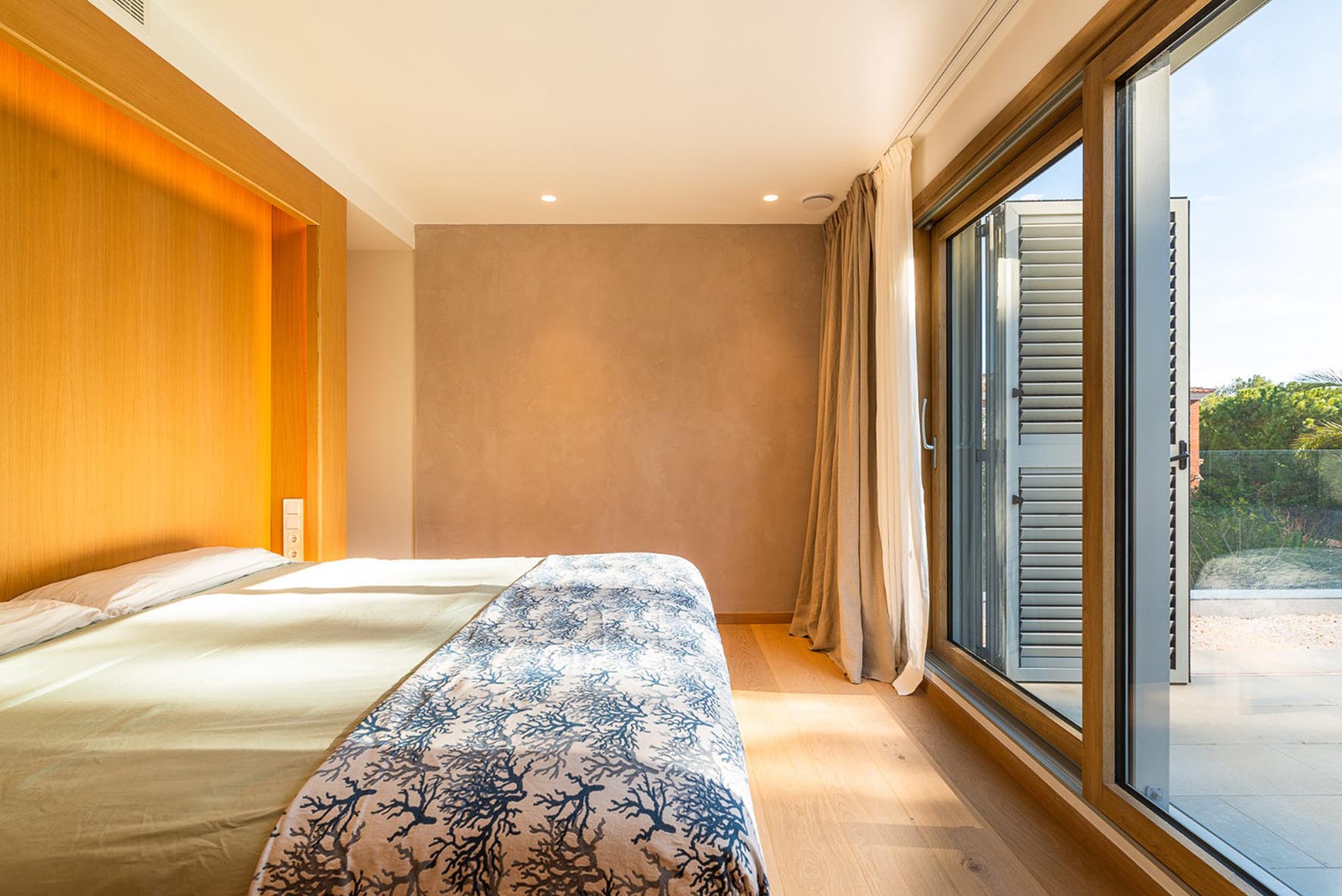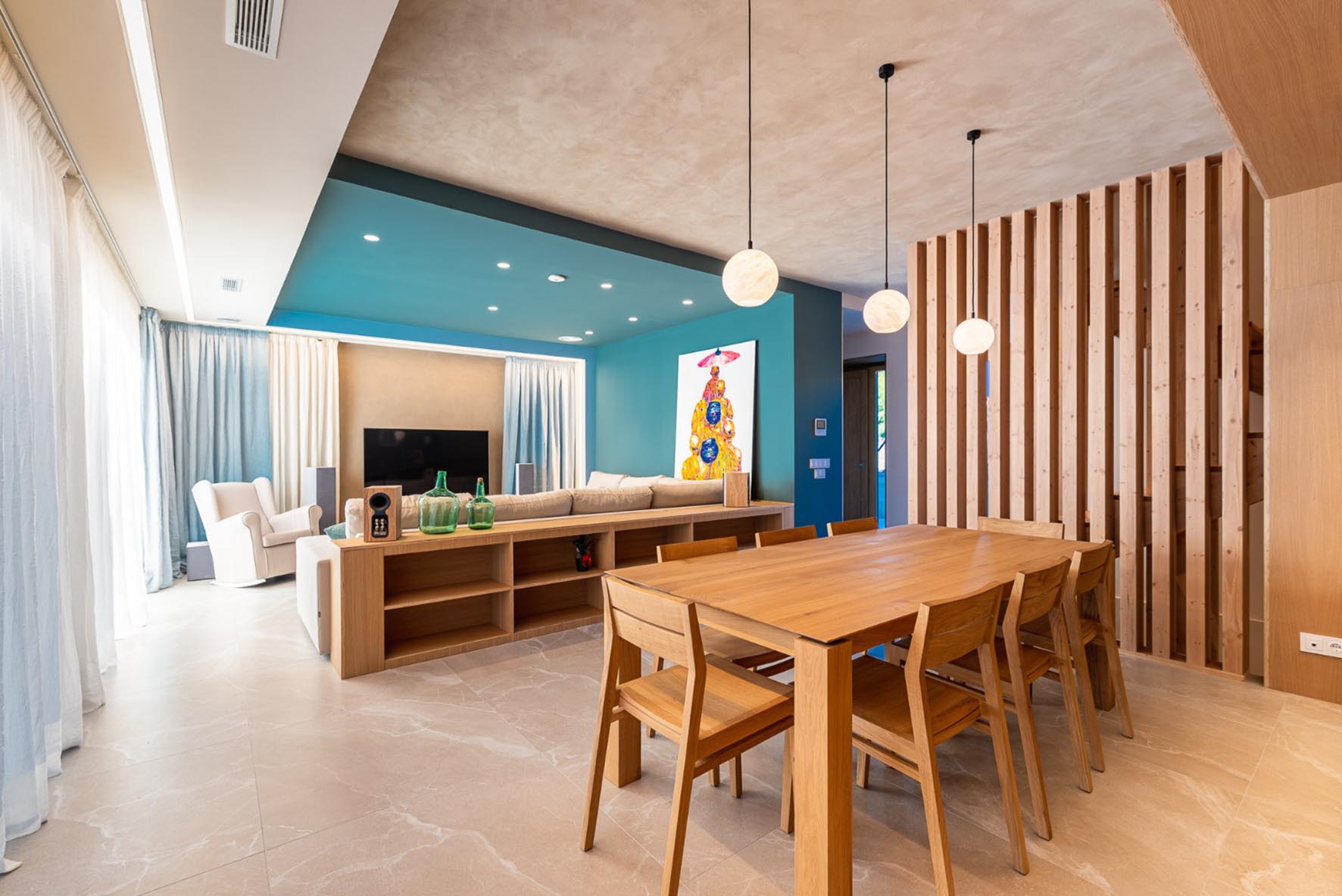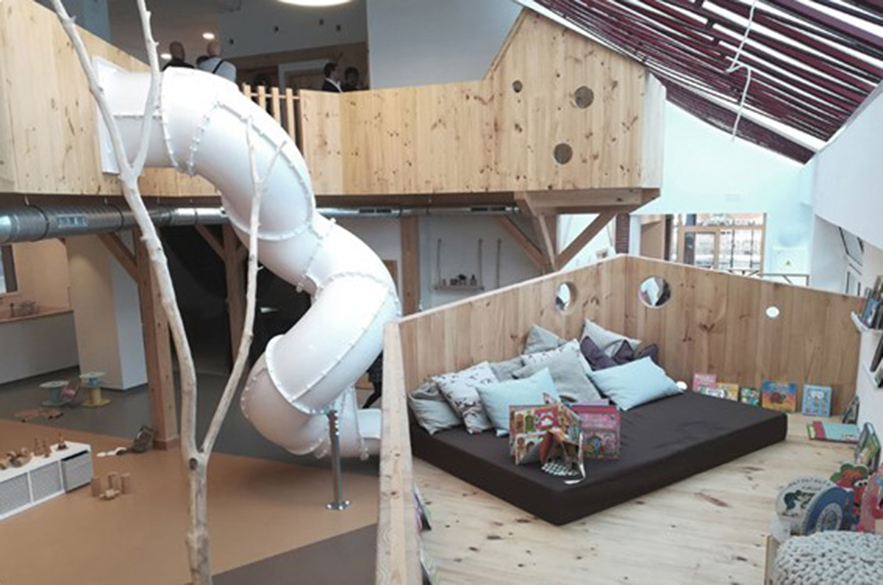Venturing into biointeriorism unveils an innovative approach to interior design that goes beyond aesthetics, transforming any habitat into genuine healthy refuges. In pursuit of a positive impact on health and well-being, biointeriorism merges sustainability and ecological principles, offering space creators a realm of possibilities to conceive environments that not only captivate visually but also nourish the body and mind.
This approach redefines the relationship between design and quality of life, becoming an indispensable tool for those seeking to go beyond the conventional in their projects.

The 5 key principles of biointeriorism
Material selection
In the conceptualization of environments, each choice is a thoughtful statement of principles. Certified woods from sustainable sources, the elegance of natural stone, and the warmth of organic textiles like cotton and linen are essential.
Considering environmental impact, ecological paints and finishes are preferred, as well as innovative green wall coverings and the intelligent use of cork as a natural insulator.
In this commitment to harmony and sustainability, innovation speaks volumes. Look at the “grown” furniture by Gavin Munro born from biodesign and biofabrication.
Integration of natural elements
The strategic use of natural light is crucial as a component that positively influences well-being and productivity. Biophilic design and plants also play a key role, and their presence is not limited to aesthetics; they act as air purifiers, improving indoor environment quality and fulfilling the human need for contact with nature to develop optimal health and well-being.
Modularity to reduce waste
It’s necessary to reconsider the way each element is applied. For this, recycled materials are an excellent option, but we shouldn’t stop there. Considering the full life cycle is essential. This leads us to value practices that reduce waste generation as a commitment to long-term sustainability. An example of this is modular systems that can be reconfigured for different applications.
Sustainable comfort and energy efficiency
The current times demand interior designs where energy and water use efficiency are not just a consideration but a genuine agreement with the planet’s well-being. It’s possible to respect the environment without sacrificing comfort, seeking a balance in resources. Let’s explore some options.
Thermal insulation becomes a cornerstone. High-quality components and innovative technologies are needed to conserve heat in winter and cool in summer, like mycelium insulation. This method leverages the vegetative part of fungi to create an organic, biodegradable, and highly efficient material.
Regarding water optimization, it’s key to implement advanced collection and reuse systems, along with applications that minimize waste, like low-flow taps and showers. There are even systems that channel water to natural pools where it is filtered and ultimately returns to the earth.
Mental and physical harmony
This addresses all physiological aspects that can influence people’s well-being, providing multisensory environments that promote physical and mental health, reducing stress, and enhancing productivity. Consider creating indoor therapeutic gardens or integrating mini-gardens into the project.
Biointeriorism with an inclusive approach
The home we live in forms an external skin that protects us from climate changes, but it must also embrace us, offering an emotional refuge and sensory support. This is particularly important for the neurodivergent population, as the home constitutes a sanctuary from the world that often directly attacks their well-being.

An example of this approach is this living room, designed by A-tipic, a biointeriorism studio focused on design for autistic individuals. Although it may go unnoticed at first glance, it hides concepts of neuroarchitecture, accessibility, geobiology, and of course, biohabitability.
The space is divided into two through material and color zoning, prioritizing natural tones and featuring a calming blue in the living room. The walls have been minimized to avoid compartmentalization that can lead to orientation and navigation issues for people.
Wood is reflected throughout the interior design for its numerous health benefits: direct contact reduces heart rate, central nervous system activity, and blood pressure. Moreover, among its technical qualities, it stands out as a sound-absorbing material and improves thermal sensation.
The combination of wood with the clay of the dining room ceiling and the TV wall, along with the use of natural linen textiles, increases acoustic comfort and improves the relative humidity of the room thanks to their hygroscopic capacity.
Paint also plays an important role, both in the choice of color and its nature. Conventional paints are loaded with volatile organic compounds that dissipate into the air as gas, so it’s crucial to always choose paints that are not only ecological but also biological, like this mineral-based silicate blue from KEIM, completely free of harmful substances and highly breathable.
Biocompatible lighting is another key to any space considered healthy. After all, the electrical installation is what can harm us the most. Often overlooked are electromagnetic fields and the “dirty” electricity generated by a poor installation. Combining different lighting points is essential to create various ambient zones, adapting to each moment, from a celebration dinner to a quiet gathering with friends on the sofa.
Biointeriorism beyond the home
Having a peaceful home is important, but there are other types of habitats where a biointeriorist perspective is applicable. For example, applications in schools, such as Zumaiena School in northern Spain. Created by the architecture studio Oskol, it combines a unique pedagogical system with bioconstruction and biodesign.

To innovate in projects of this type, Aitor Axpe indicates that “it has taken a lot of insistence and trust from the schools that designs beyond the conventional work. Now, after more than 10 years of good results, more and more centers are implementing biointeriorism in their spaces.”
Biointeriorism emerges as a revolutionary design philosophy that not only transforms homes but also schools and other environments, establishing itself as a necessary shift towards a more sustainable and habitable future.




